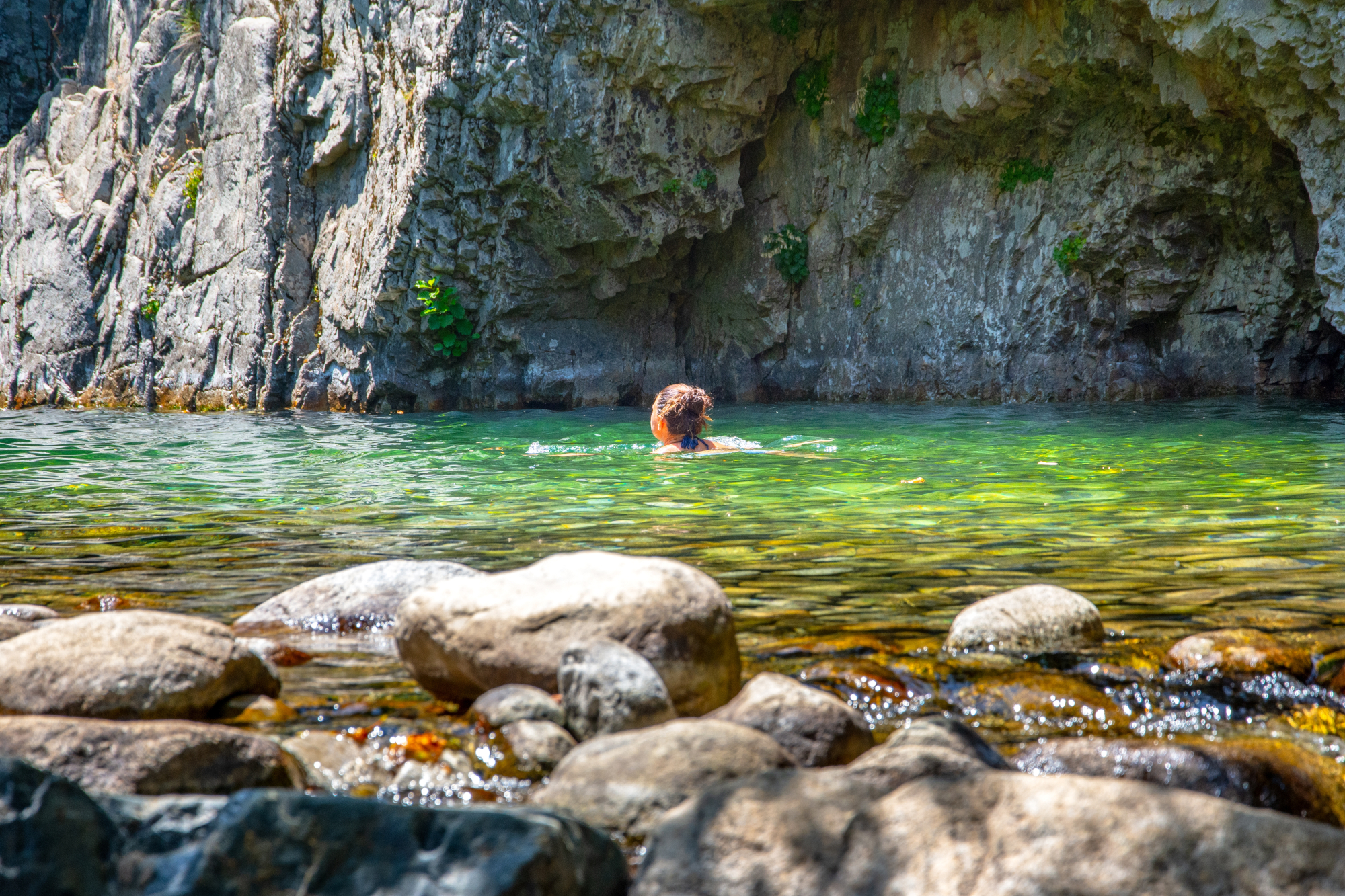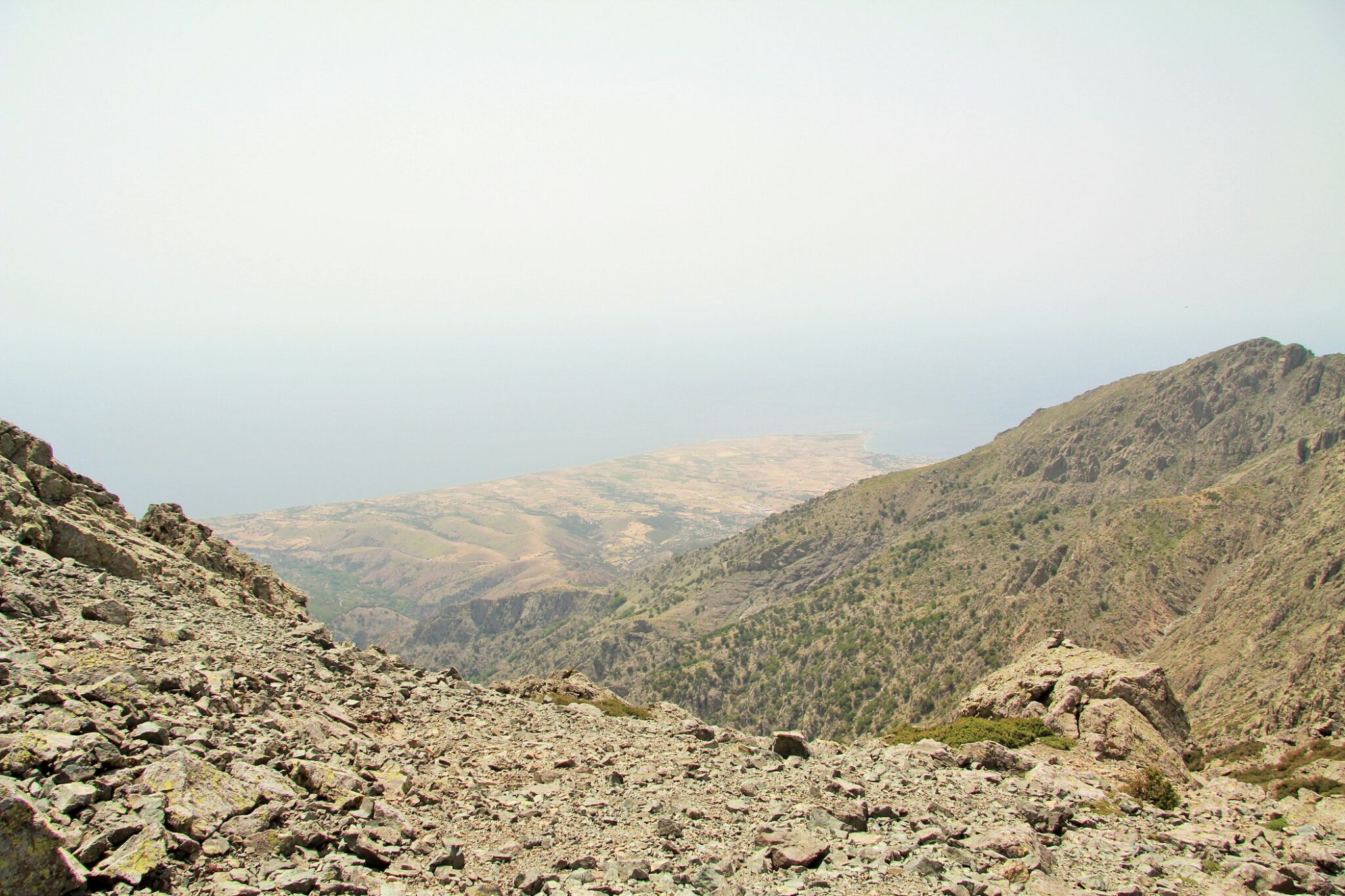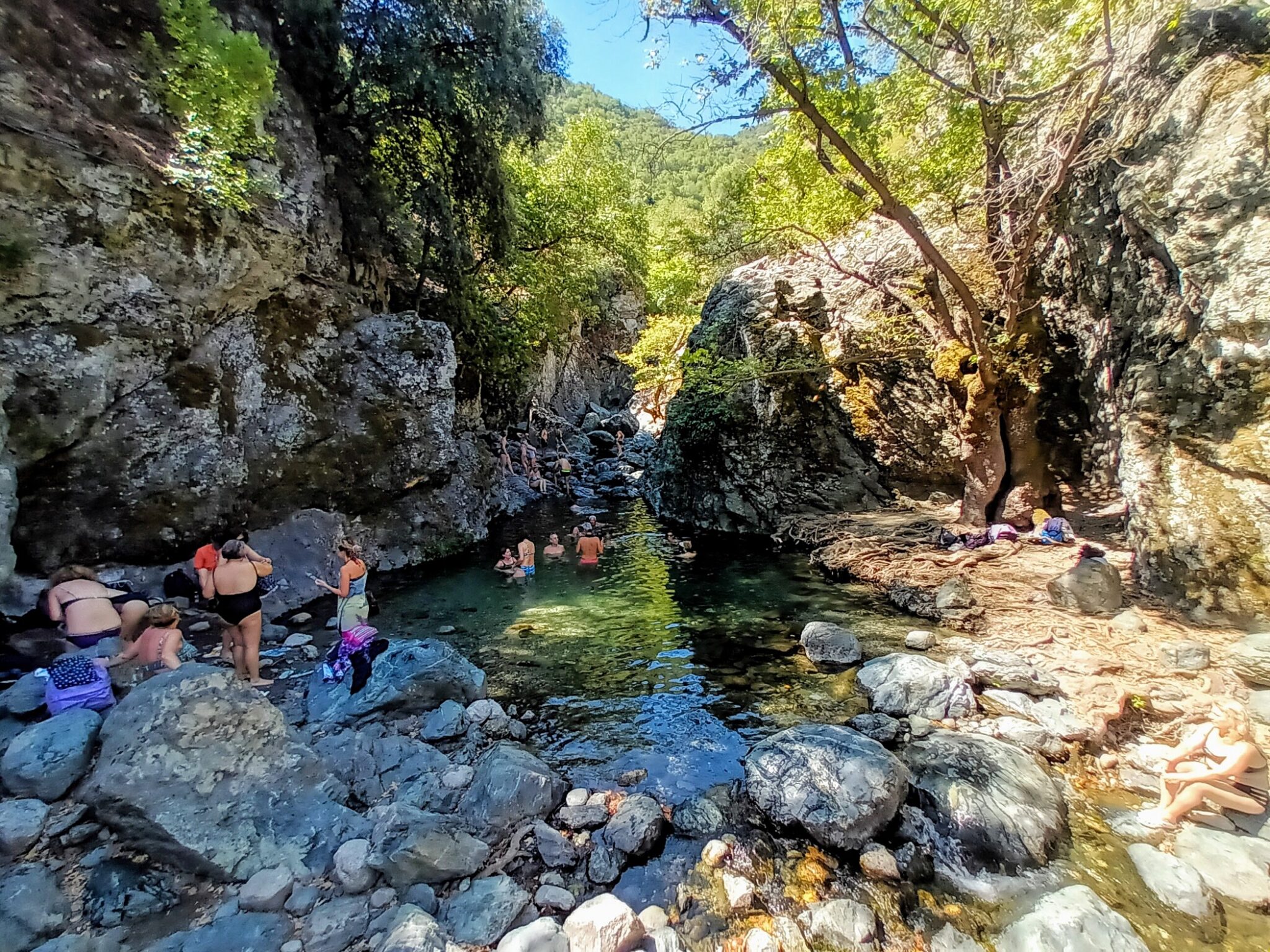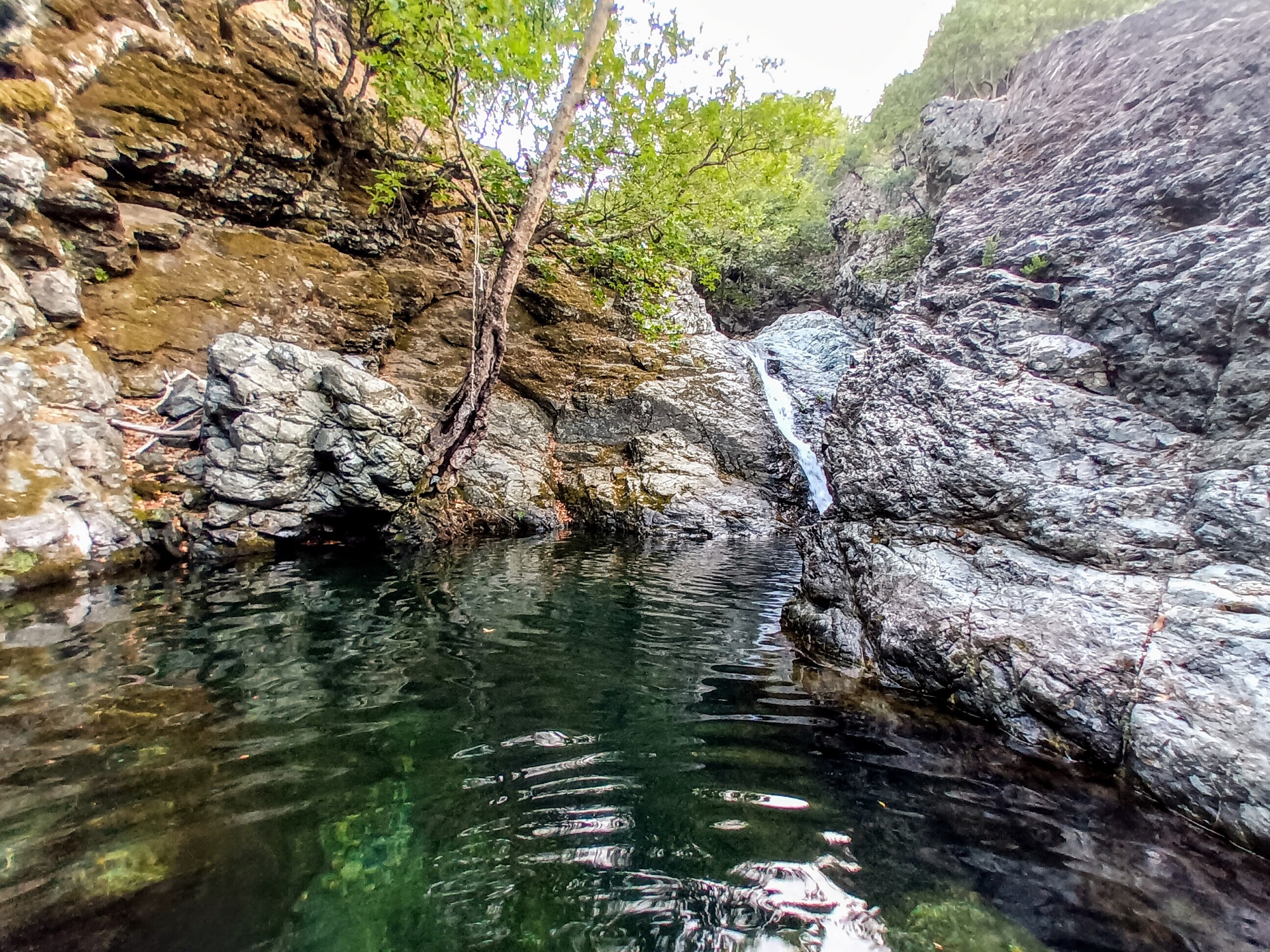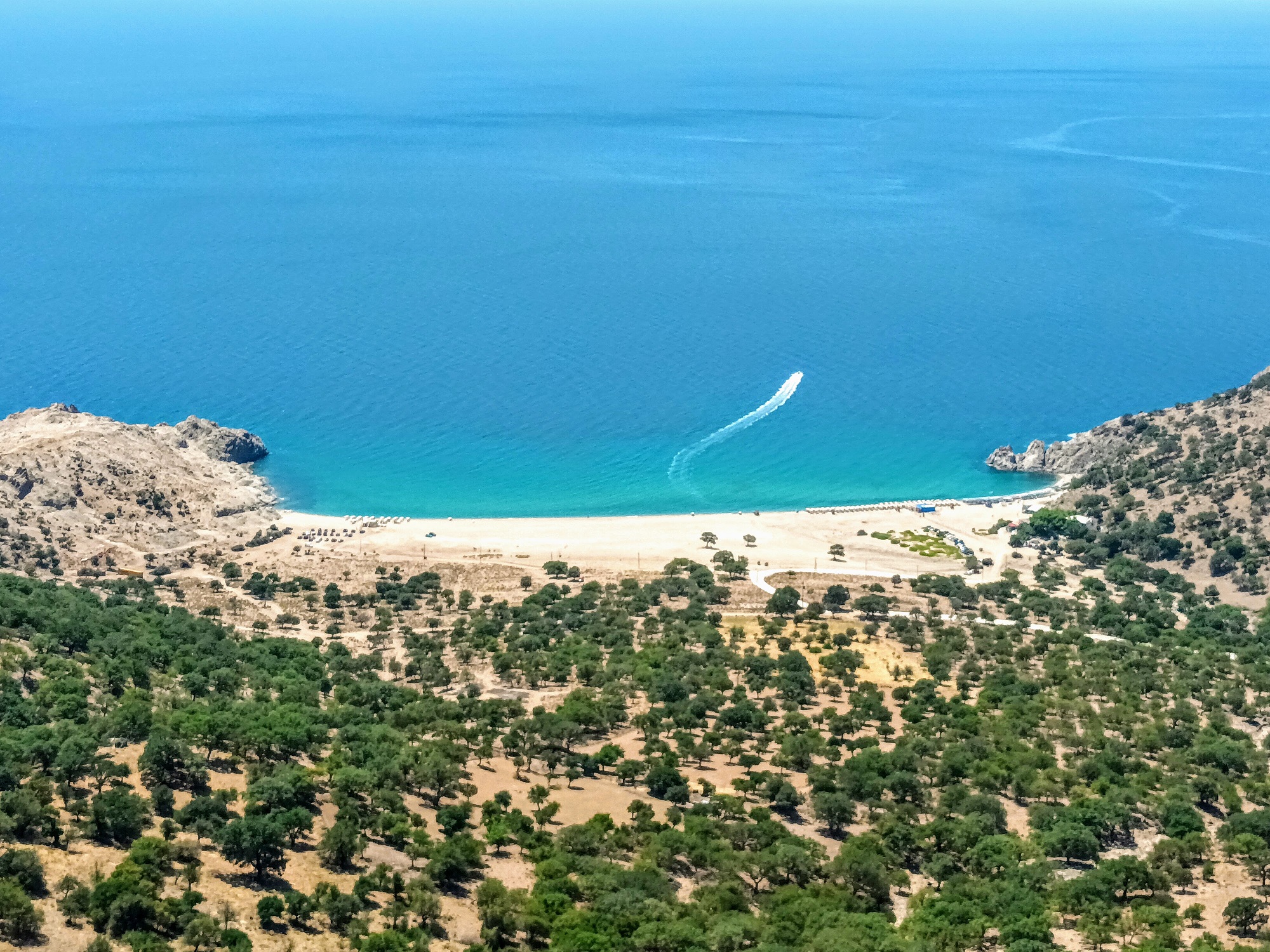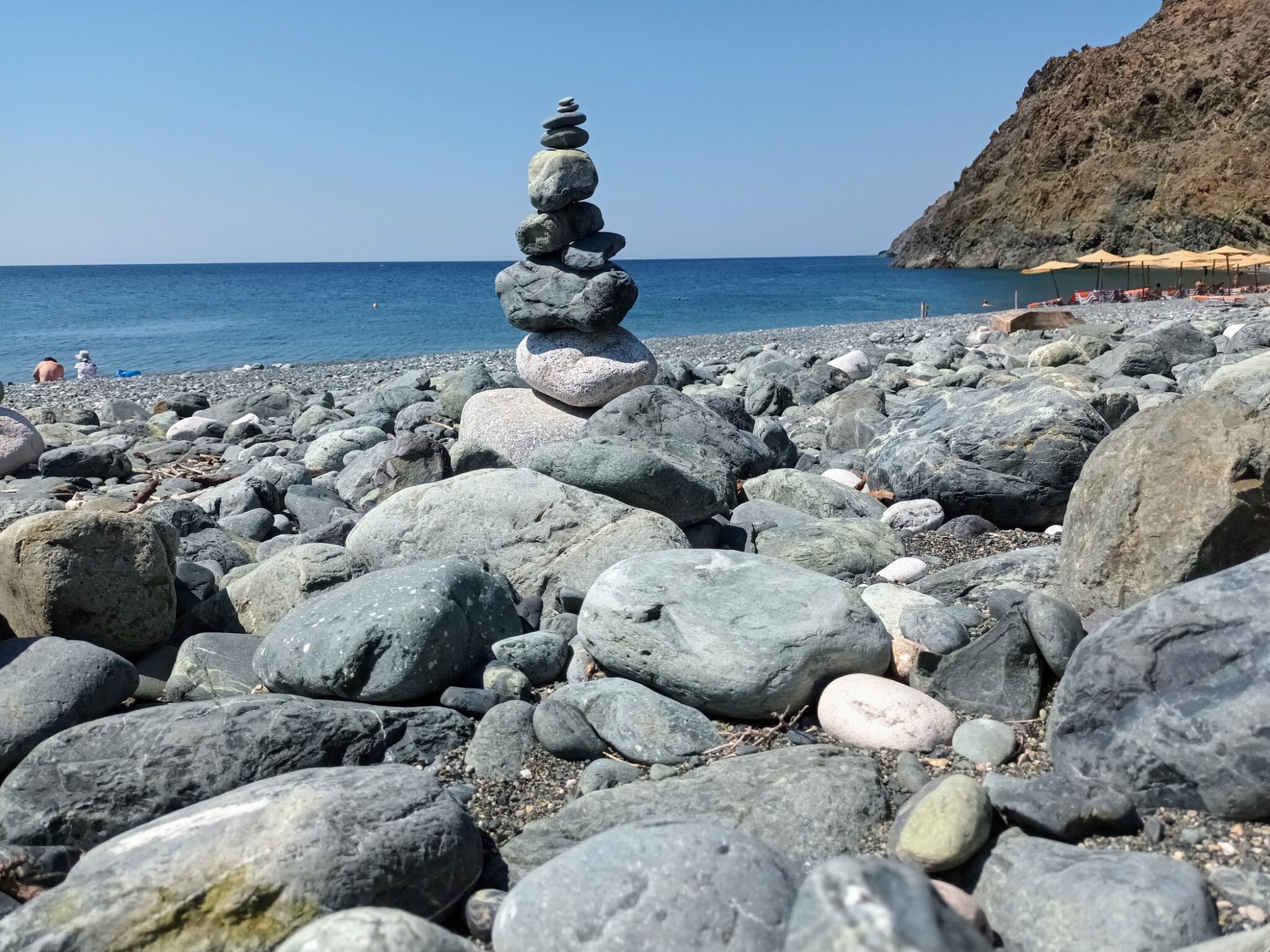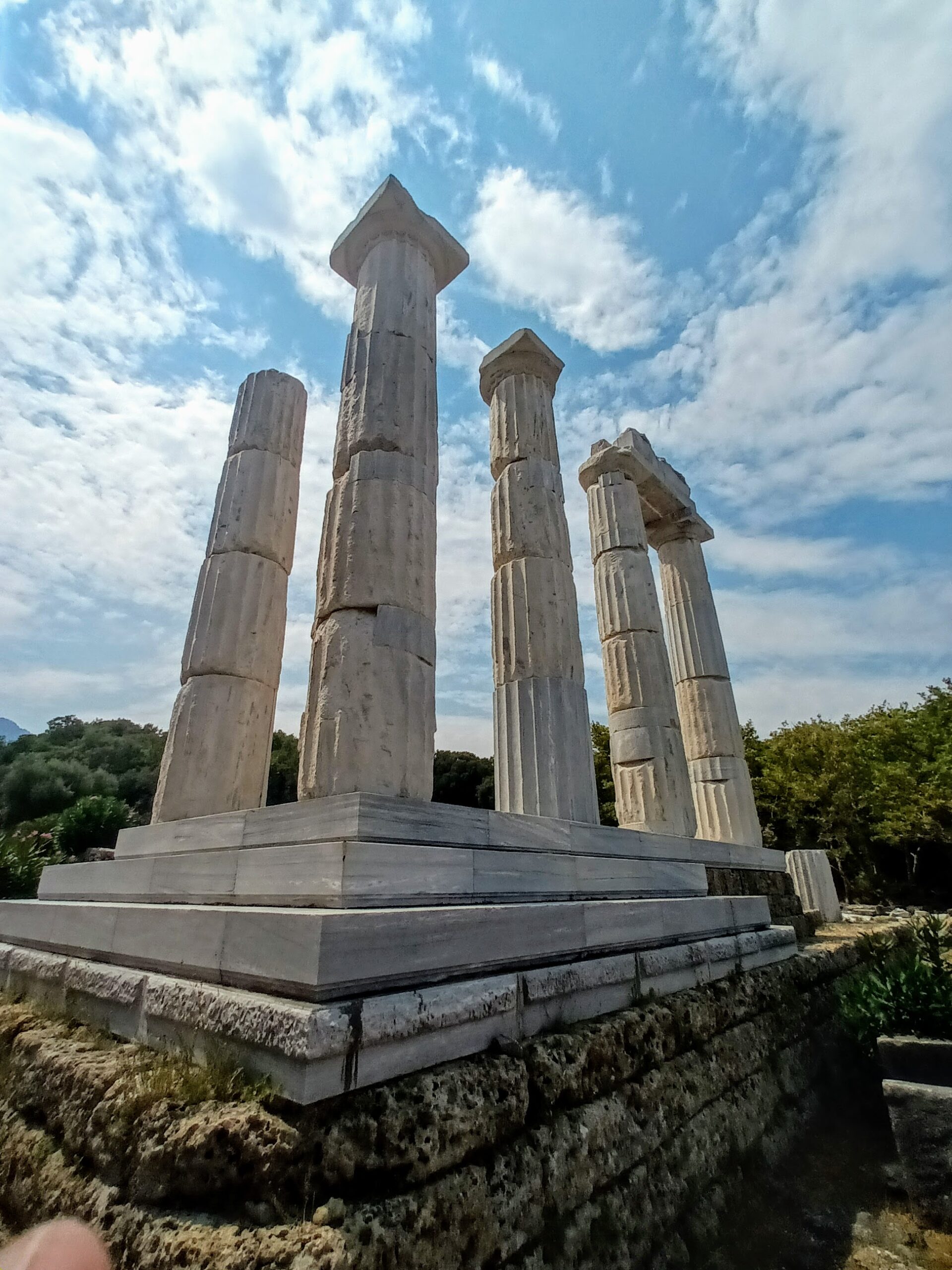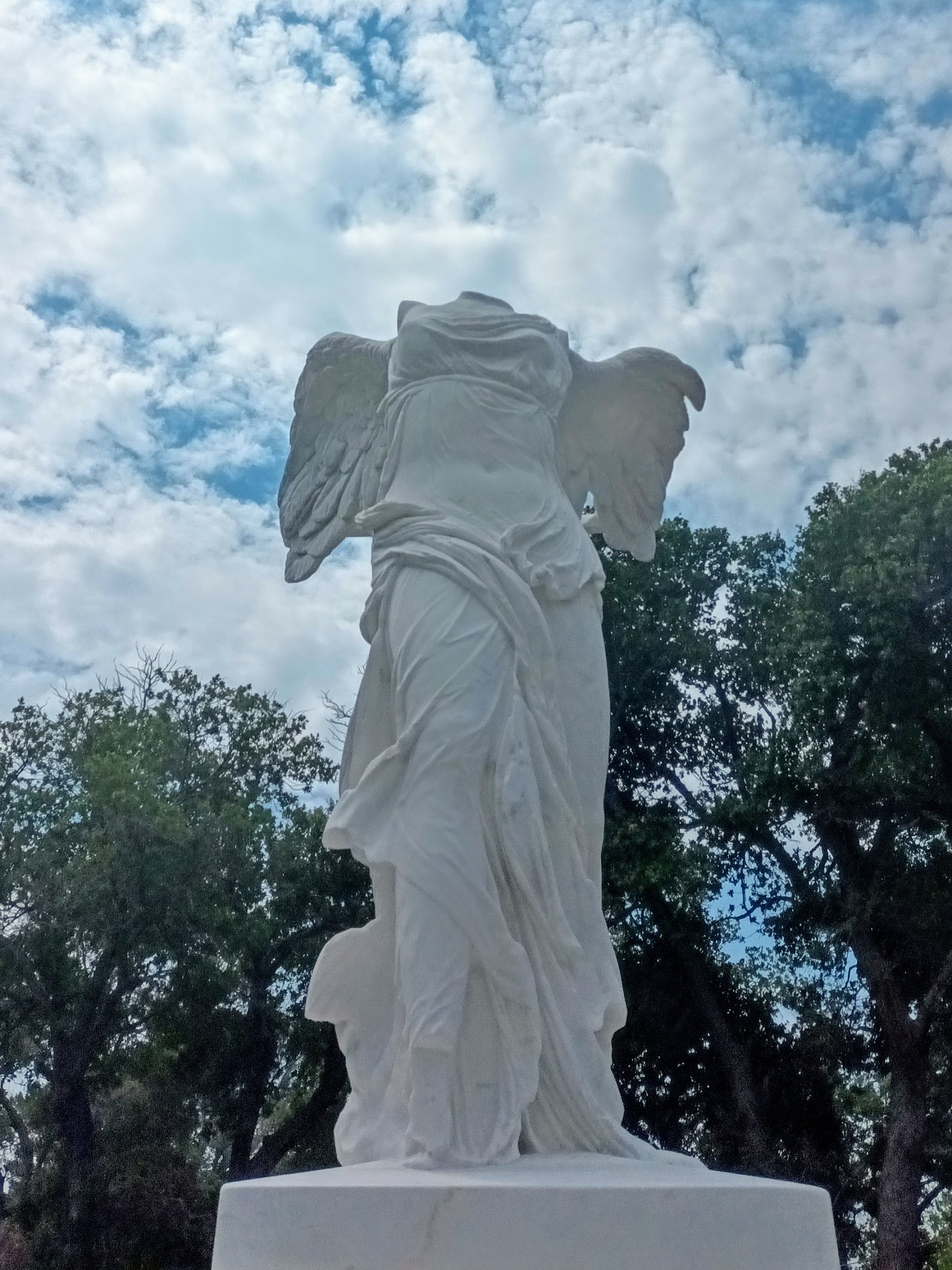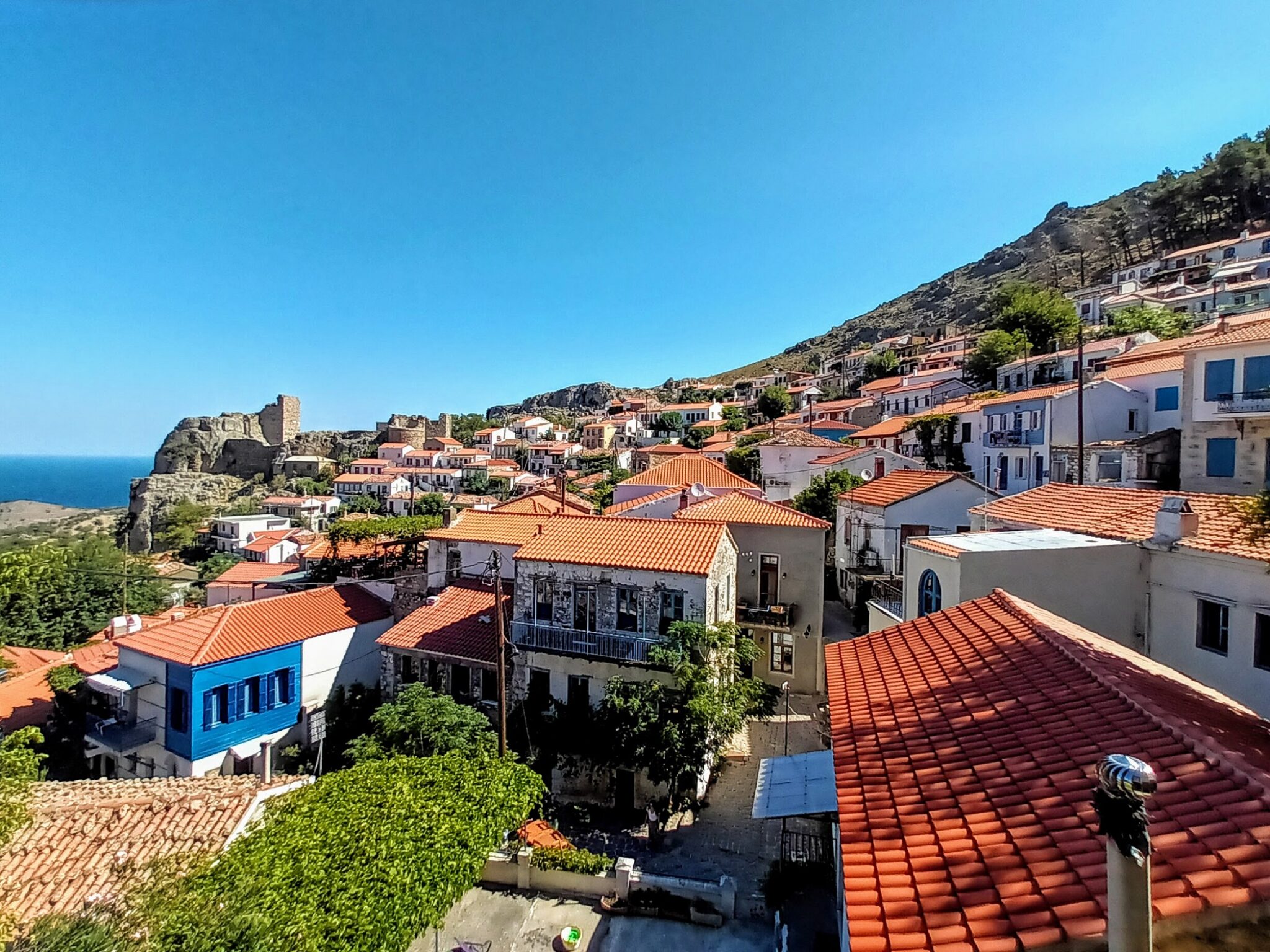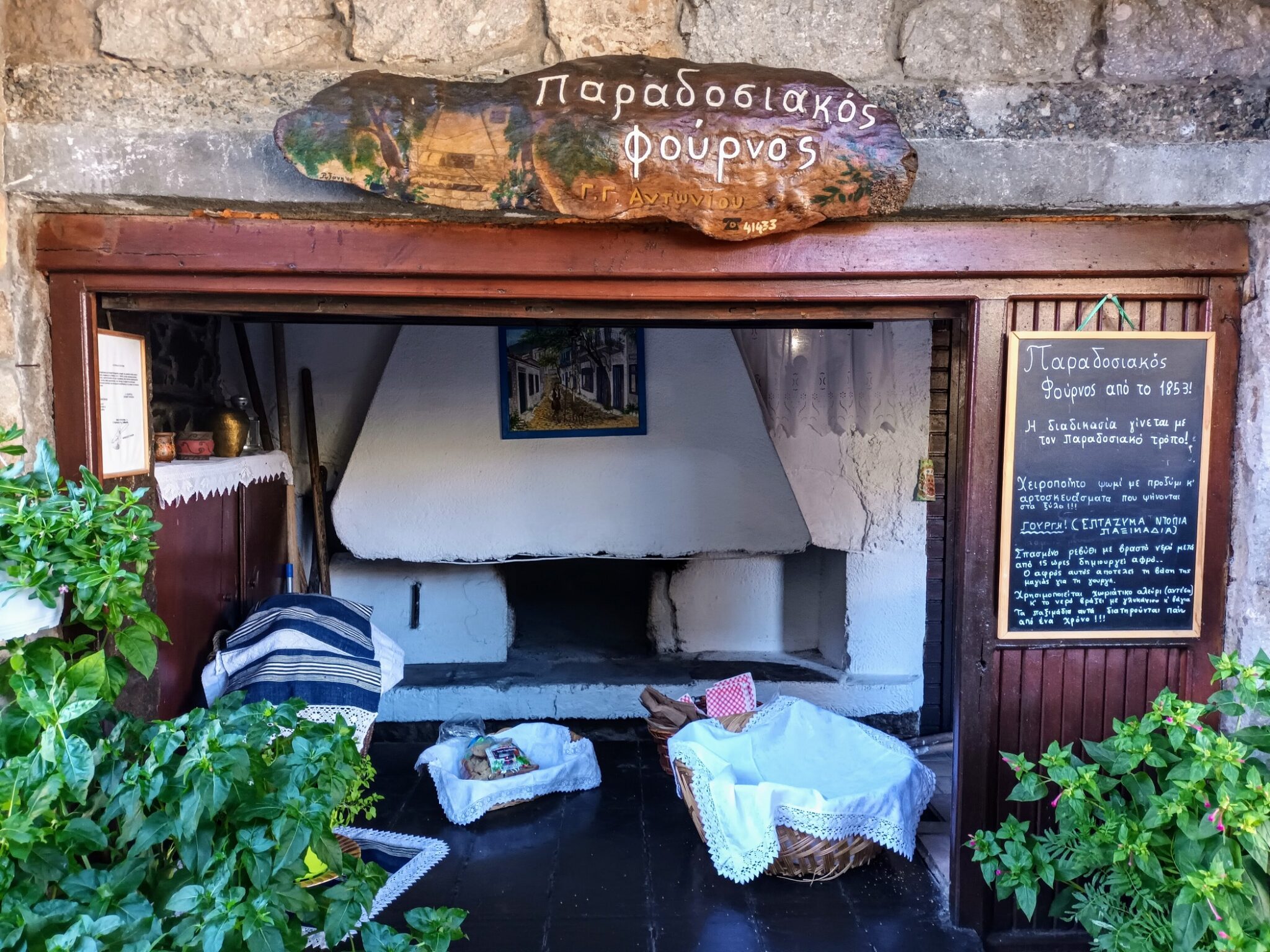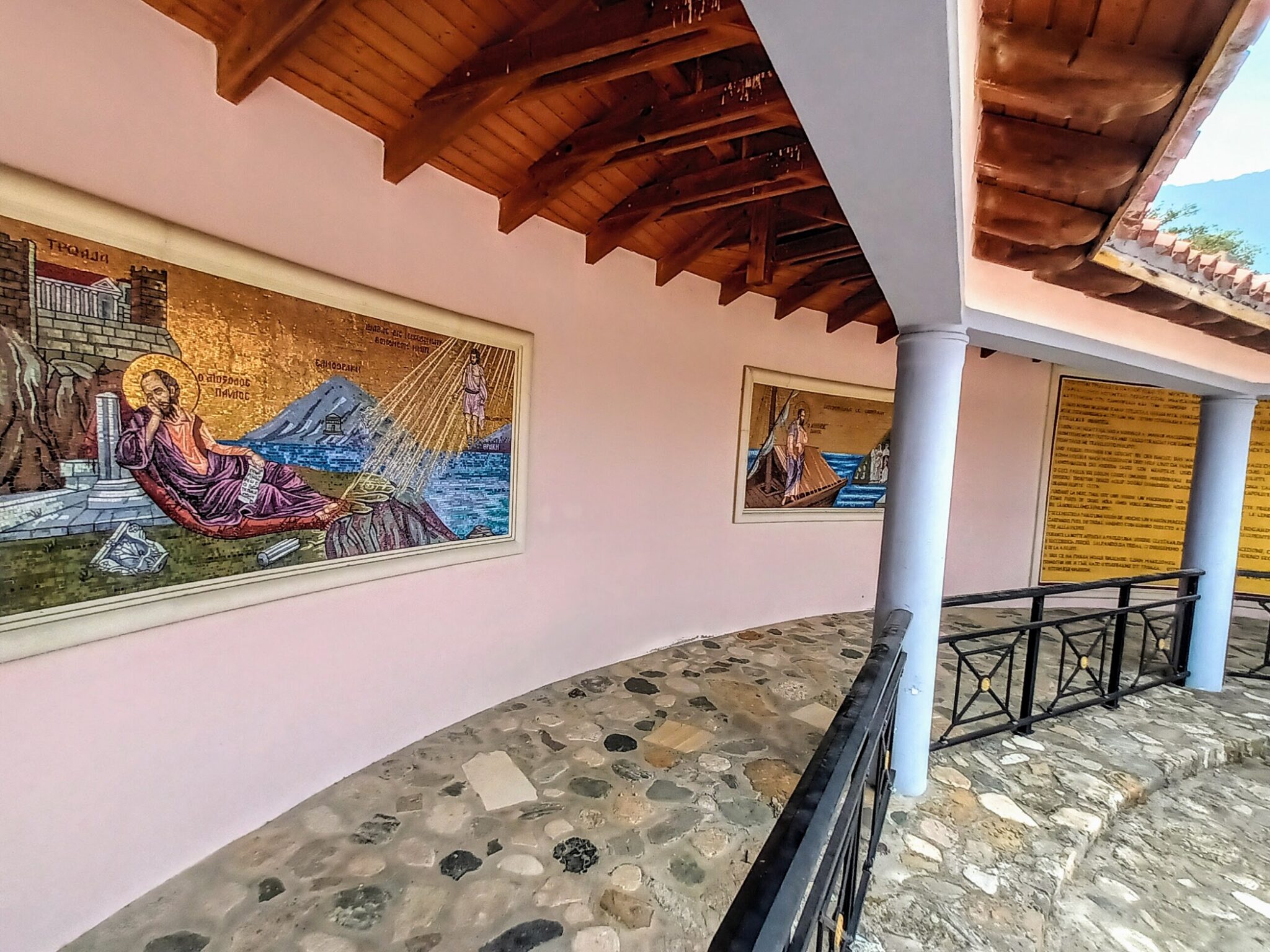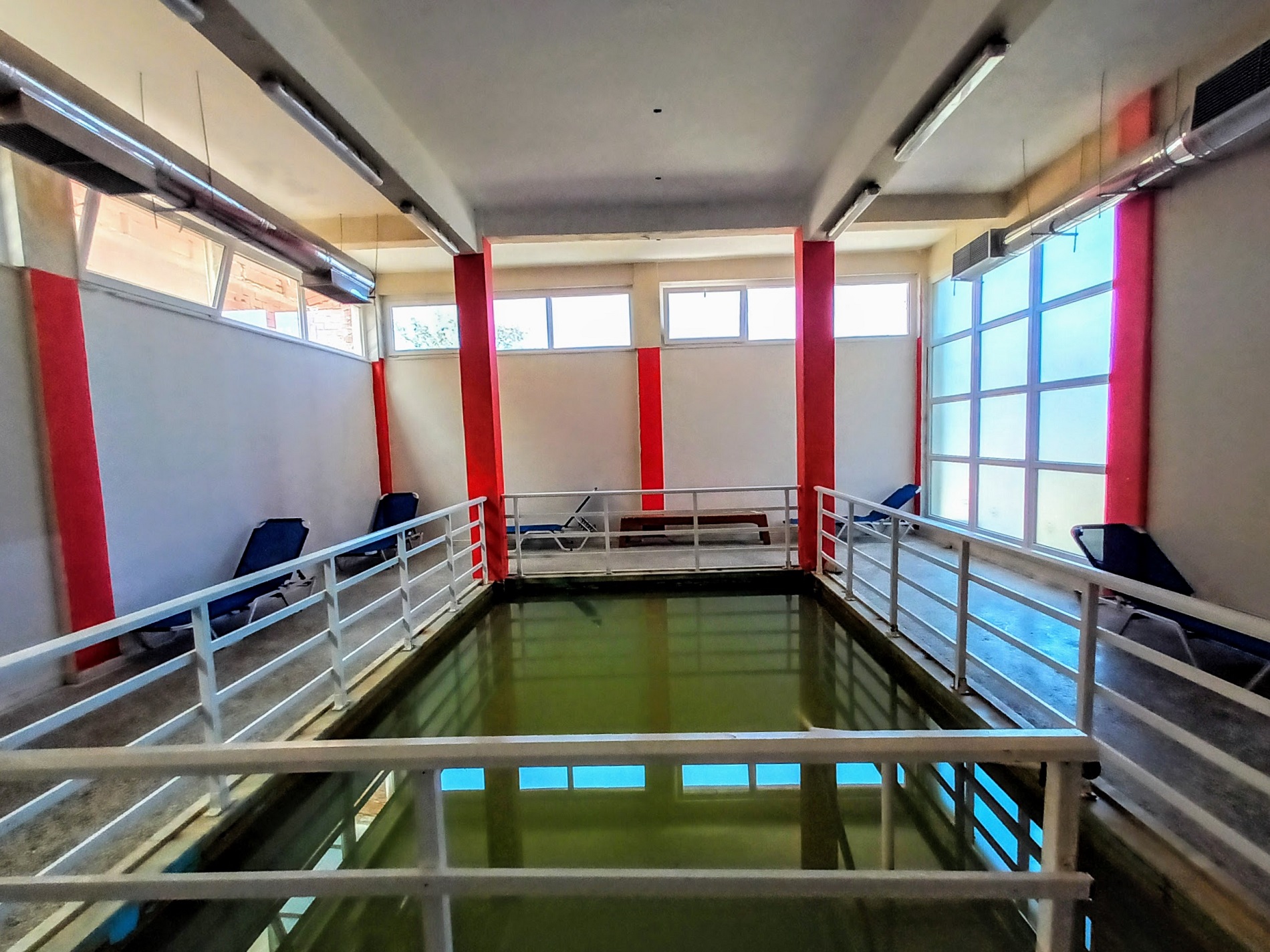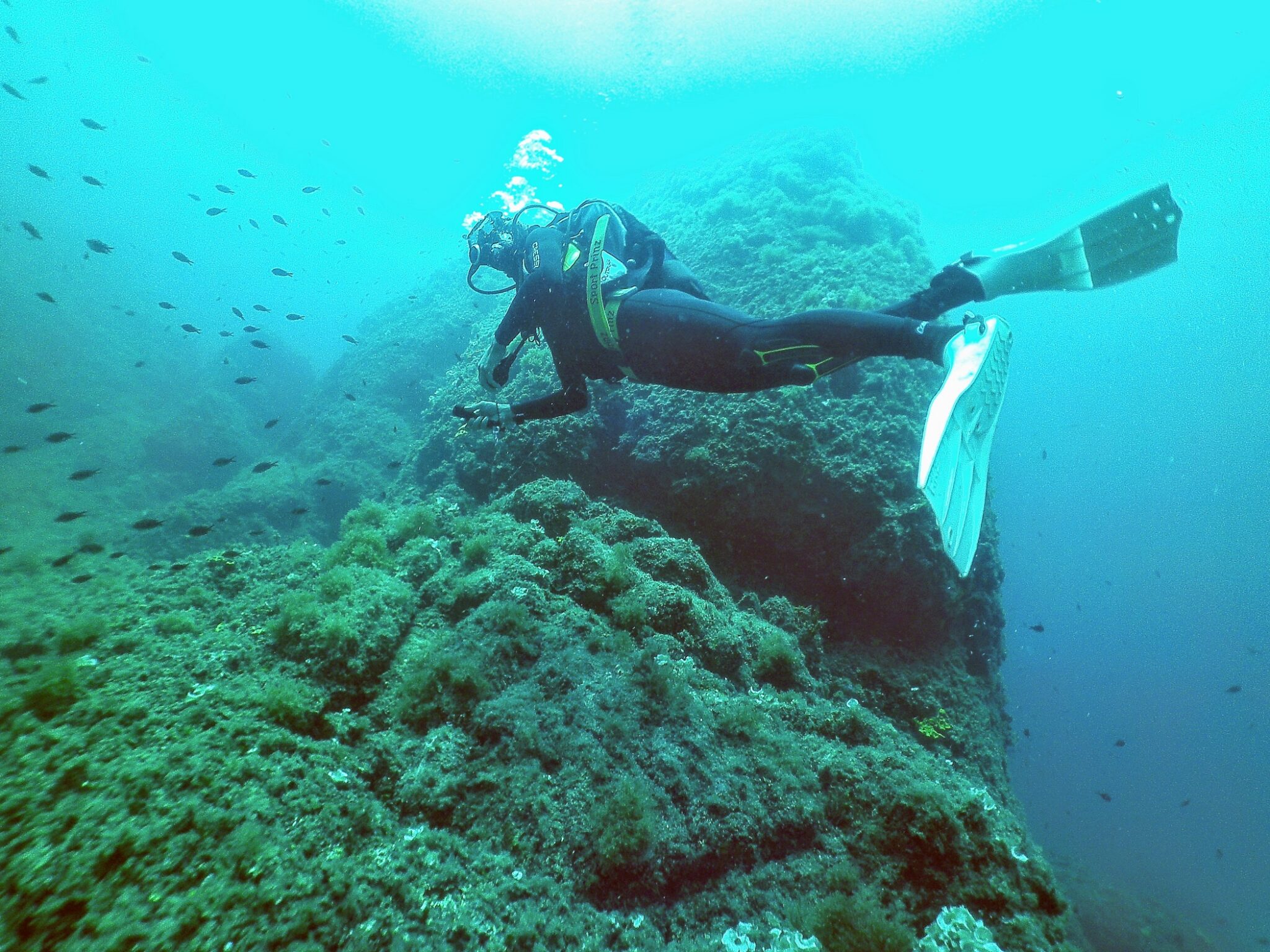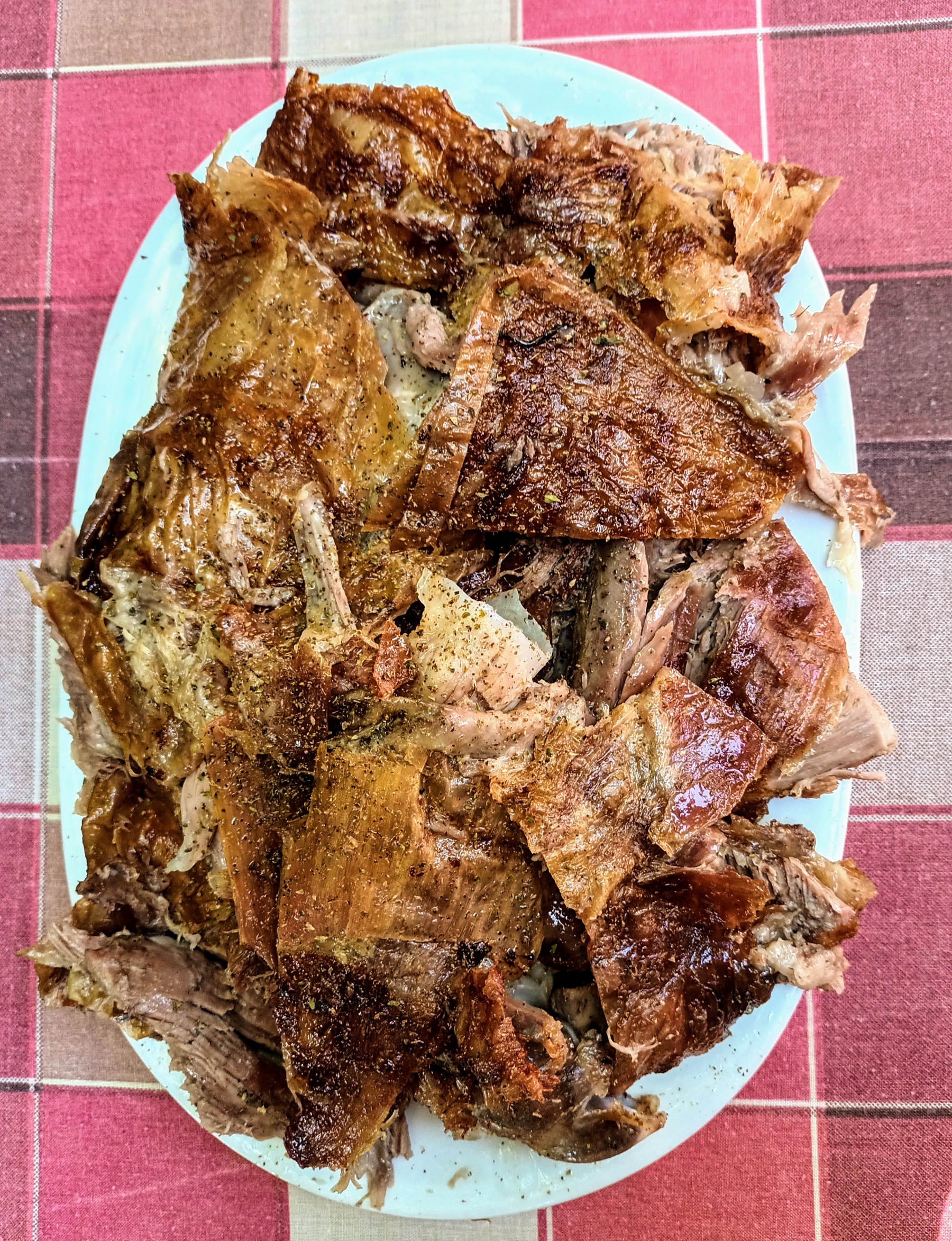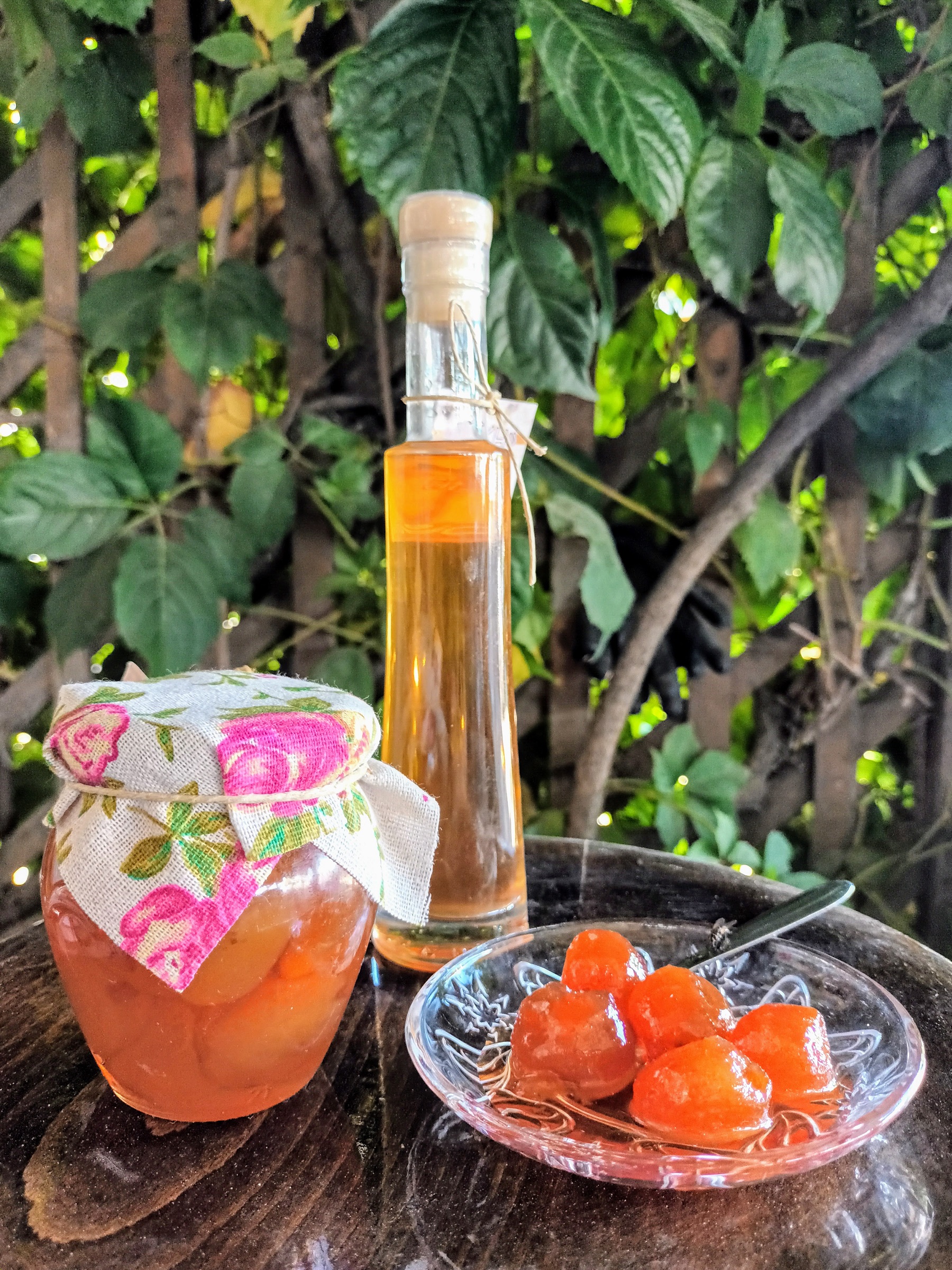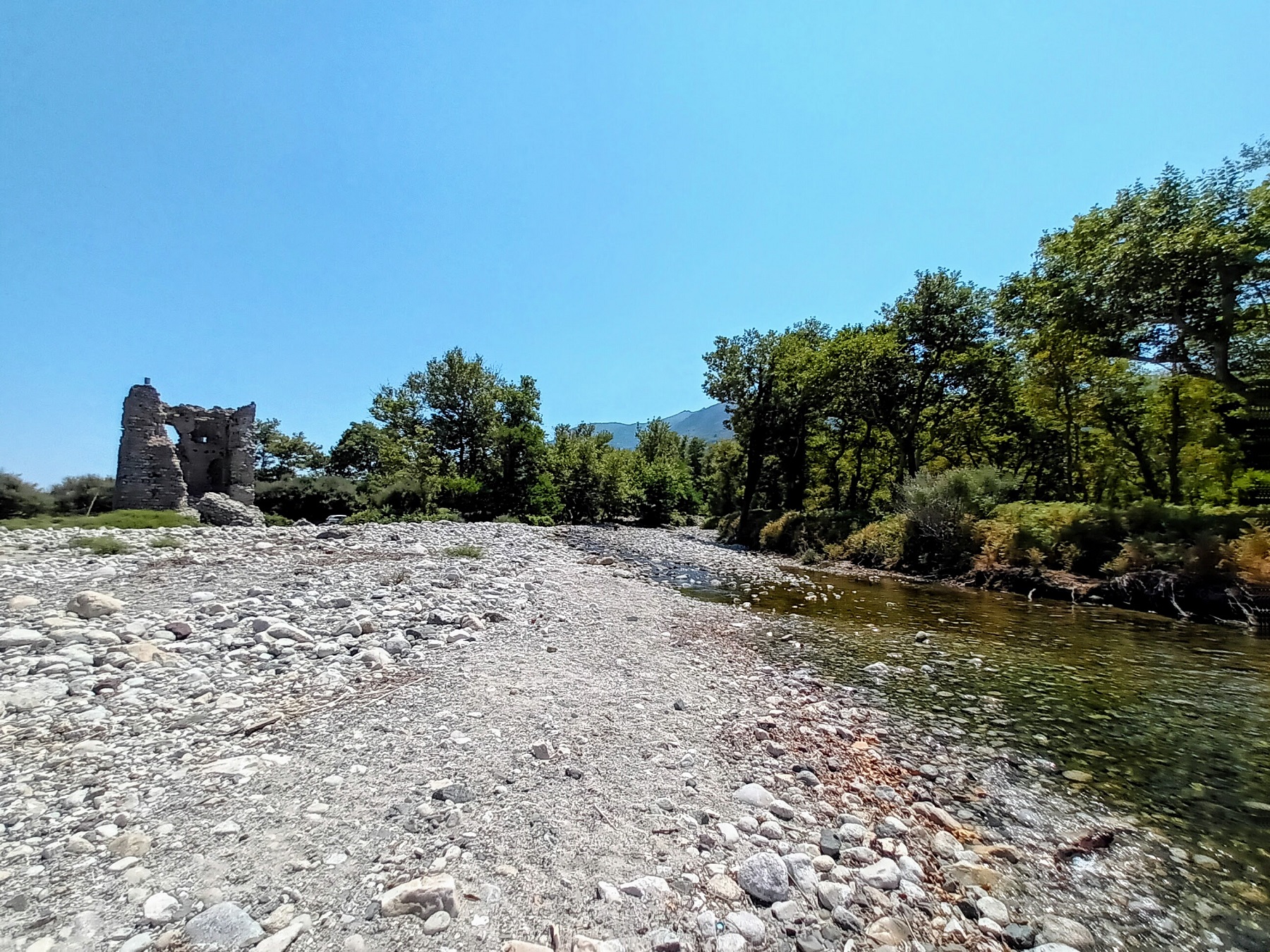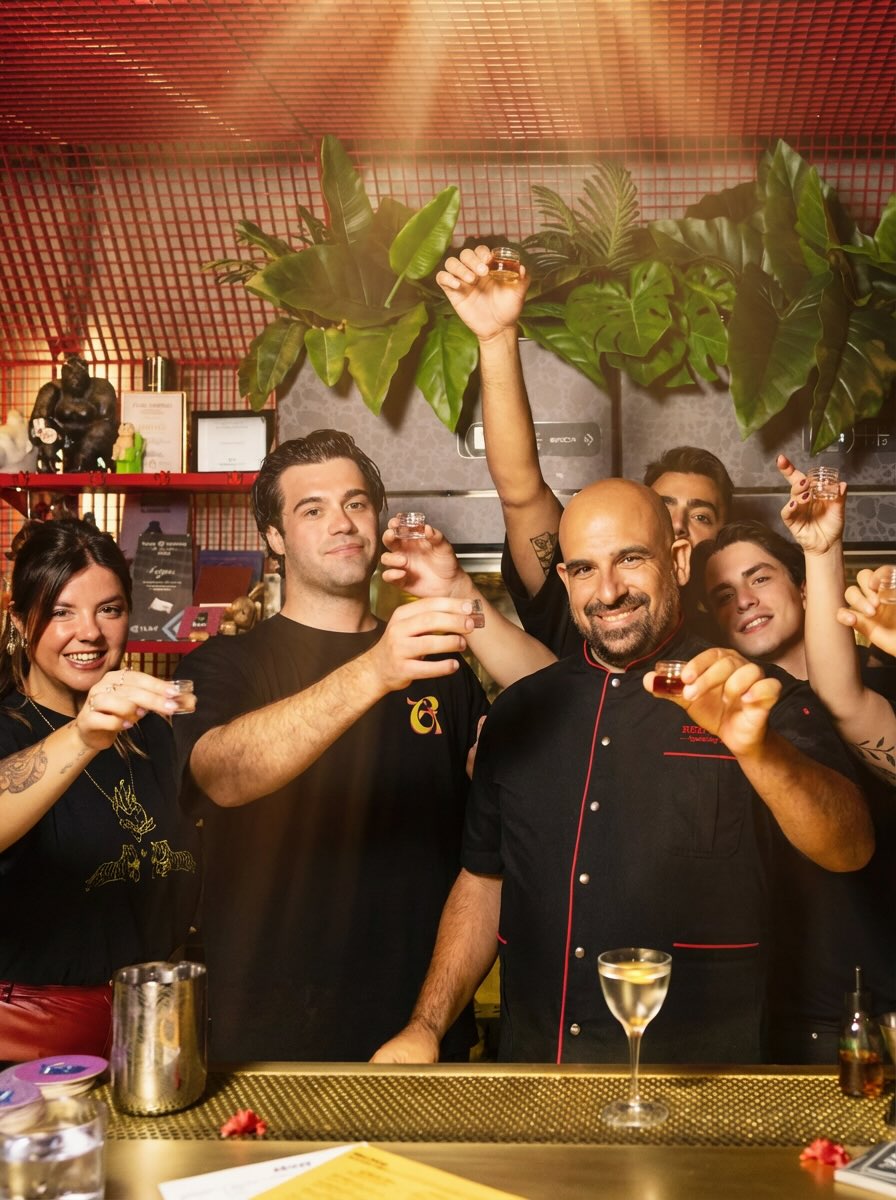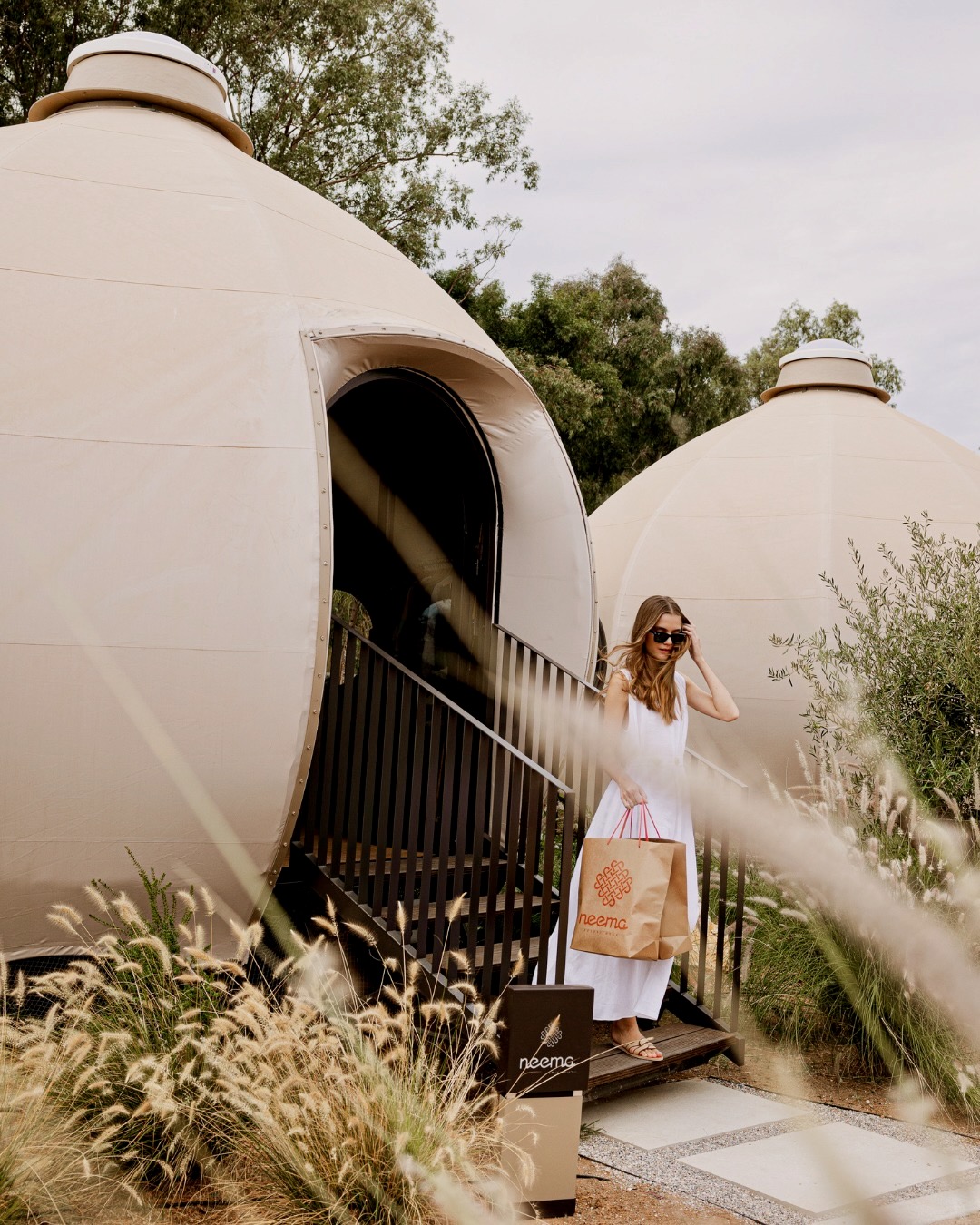As the boat approaches Samothrace (or Samothraki), the imposing nature of Mount Saos, towering over the island and its people, becomes increasingly apparent. Once there, visitors typically spend more time heading up shadowed trails alongside streams and waterfalls with freezing waters rather than swimming in the sea and relaxing at the island’s beaches.
Samothrace offers otherworldly and pristine beauty. The island is like a mountain floating over the northeast Aegean Sea. Its beauty becomes increasingly impressive the more one explores the island, from end to end. One side is covered in rich greenery, with centuries-old plane trees, ferns and herbs, while the other side, a stark contrast, is dominated by the wild grey colour of rocks. The island’s wonderfully alternating settings, colours, sounds and scents reach all the way to the endless blue of the Thracian Sea.
This unique setting, not to be found on any other island in the Aegean Sea, is enhanced by antiquities, thermal springs, local gastronomy, traditional products and outdoor activities, five key additional reasons for making Samothrace your next destination. There is plenty of summer weather still to come.
Keep in mind that Samothrace is no ordinary island, which is what makes it a favourite place for travellers seeking serenity, relaxation and a sense of freedom in pristine nature, qualities not to be found at hotspot destinations with livelier summer scenes.
1) Climbing Mount Saos
If you enjoy trekking and mountaineering, try heading up Mount Saos, the tallest mountain of the Aegean, whose Fengari summit is at 1,611 metres. According to Greek mythology, Poseidon watched the Trojan War unfold from this elevated point. The course up the mountain requires experience and fitness, but the view from the unique top and sense of freedom definitely reward.
The route begins from the village Therma, runs for nearly 8 km, is uphill and steep at certain sections. The European E6 path, signposted but requiring attention, reaches the mountain’s peak. The trek all the way up requires nearly 6 hours. The descent requires slightly less time. The mountain’s northern slopes are covered with oak forests, while the streams, reaching dozens of plunge pools, are surrounded by plane trees and alders. The peaks are bare and precipitous. (Hellas Canyon, tel. 6972207736, offers hiking, canyoning and climbing programmes).
2) Swimming at the plunge pools
Heading down the steep slopes of Mount Saos, streams cascade to form lovely little plunge pools referred to as “vathres” by locals. A total of nearly 100 plunge pools exist on the mountain. Reaching most of these requires fitness and great care. The plunge pools at the Gria and Fonia streams, both close to the village Therma, are the most popular.
It would be no exaggeration to say that more people are attracted to the plunge pools and the trails leading to them rather than the island’s beaches. Thrill-seeking visitors swim in these cold waters, sometimes stark naked, for a direct sensation. The natural setting at these plunge pools, dominated by centuries-old plane trees and running waters, is like a fairytale setting.
3) Enjoy swimming at various beaches
Samothrace offers a limited number of beaches that could be counted on the fingers of one hand, but they all vary. Pahia Ammos, Samothrace’s most renowned beach – it is the only beach with fine sand on the island – is 20 km from Kamariotissa, the island’s biggest town, and can be reached by vehicle.
Kipi beach, in the southeast, 27 km from Kamariotissa, stands out for its rugged beauty. This beach, formed by volcanic activity, is covered with large black pebbles and surrounded by tall, steep rocks.
Beach bars operate at the Pahia Ammos and Kipi beaches, but, even so, they remain laid-back places. Pebble and stone-covered beaches may also be found at Therma and Pyrgos Tou Fonia, while Gyali beach can only be reached by boat. Vatos, considered the island’s most beautiful beach, features white sand and turquoise waters.
4) Cabeirian Mysteries of antiquity
Samothrace was well known in antiquity for its Cabeirian Mysteries, worship ceremonies held at the Sanctuary of the Great Gods. In terms of significance, only the Eleusinian Mysteries in Eleusis were deemed as more important. Phillip II of Macedon met Olympias, mother of Alexander the Great, at the Cabeirian Mysteries.
Ruins of the most significant ancient buildings are preserved at the archaeological site of Paleopoli, including the Sanctuary of the Great Gods, the Rotunda of Arsinoe, and the palace. Models of ancient buildings are on show at the Archaeological Museum (tel. +30 2551041474), while a replica of the world-renowned Winged Victory of Samothrace, whose original is exhibited at the Louvre Museum, dominates the museum’s exterior space.
The medieval Gateluzzi Towers, once part of the island’s defense infrastructure, are also interesting. Towers are located at Paleopoli as well as at the mouth of the Pyrgos Tou Fonia stream.
5) Stroll around at the Hora main town’s alleys
Hora, the island’s main town, has been declared a heritage site. It is built around the southeastern slopes of Mount Saos, shaped like an eagle’s nest, the traditional two-storey houses stacked up against the slope. During medieval times, the town was fortified by the Venetians, who controlled the island until it was occupied by the Ottomans. A section of the Gateluzzi castle has been preserved and is open to visitors.
Narrow cobbled alleys and steps run through Hora’s neighbourhoods and lead to small squares offering superb views of the sea. Visit the castle; Kimisi Tis Theotokou church, from 1875, where the five Holy Skulls of the Neomartyrs of Samothrace are kept; as well as the adjacent Folklore Museum, housed at an old mansion featuring local architectural style (tel. +30 2551041227). Hora is also home to Greece’s oldest traditional bakery (tel. +30 2551041433), from 1853, whose products include a variety of rusks.
6 – Follow in the footsteps of Paul the Apostle
Samothrace was the first part of Europe visited by Paul the Apostle, in 49 AD, while he was on his way to Macedonia from Troas to begin his tour of Europe. The Stasidi, a modern monument-pilgrimage, was constructed east of Paleopoli in memory of Paul the Apostle. Many small churches on the island also stand as proof of the faith and piety of locals.
The Panagia Krimniotissa chapel, situated slightly before Pahia Ammos beach, 2 km off the road, is on the edge of a cliff, offering a magical view of the northern Aegean Sea and the Imbros island’s shoreline to the southeast. One of Samothrace’s most significant Christian monuments, the Iera Moni Christou church, dated back to the 14th century and situated east of the village Therma, has been partially restored.
7) Enjoy the thermal baths
Besides swimming in the sea or at the island’s freezing plunge pools, it is also worth visiting Samothrace’s thermal baths at the village Therma. The springs and their therapeutic properties, renowned since Byzantine times, help relieve a number of conditions, including rheumatoid arthritis, gynecological, vascular and skin conditions.
The water temperature at the Hydrotherapeftirio thermal bath (tel. +30 2551098401), run by the Samothrace municipality, reaches 38 to 39 degrees Celsius. It features indoor pools and private baths. For an even more special experience, try the outdoor pools. The amenities offered may be more modest, but swimming here during sunset, with a view of the Thracian Sea, or under the starlight, is unique.
8) Outdoor activities, cruise around the island’s waters
Besides hiking, canyoning and climbing at Mount Saos, Samothrace is also perfect for other outdoor activities, from cycling tours covering the island to scuba diving in waters regarded as being among Greece’s richest in terms of marine life. (Samothraki Diving Centre – tel. 697 356 7384).
If you prefer more leisurely activities, consider a boat excursion around the island. The itinerary usually includes a visit to Kremasto Nero, a location of rugged natural beauty at the island’s south, where an impressive 180-metre waterfall flows into the sea. Very near, an unusual coastal rock formation creates a giant textile-like impression, referred to as “Tis Grias Ta Pania” (Old Lady’s Farbrics) by locals. Also stop for swims at two magical beaches, Vatos and Gyali, which, as mentioned above, can only be reached by boat. (Theodora boat excursions, tel. +30 6974062054)
9) Enjoy the local cuisine, dominated by goat recipes
Given the hundreds of free-range goats grazing at the island, it is no surprise that goat meat dominates the local cuisine. The local goat meat is very delicious and quite special. Definitely do not leave Samothrace without having tried it, either in its classic grilled form (Vrahos grill, Profitis Ilias, tel. +30 2551095264) or in gourmet versions (Karydies, Ano Meria, tel. +30 2551098266).
Then again, being on an island and not having a seafood experience is unimaginable. Common dentex, seabream, striped red mullet, octopus, lobster and other specialties need to be enjoyed on the island (fish taverna Argo, Vasilikos, tel. +30 2551042139). As for local sweets, besides the traditional mirabelle plum sweets and haslamas (cake soaked in syrup), try the Ftera Ke Pissa, a modern sweet recipe much like chocolate cake but definitely different. (Lefkos Pyrgos, Hora, Samothrace, tel. +30 2551041601)
10) Buy local products
Praousto, or praousti, a mirabelle plum sweet preserve, is the island’s standout sweet of the sweet preserves category. The similar-tasting haslamas, made with virtually the same ingredients, is also worth buying before leaving the island. (Gonia Tis Nikis, Traditional Products, Kamariotissa, tel. +30 6976193768).
Samothrace is also renowned for its forest honey, produced in small quantities and made distinctive by its bittersweet taste. This honey is produced mostly from a wild arbutus fruit that is almost exclusive to the island. The honey also includes spring heather, maple and wild pear (produced by the Vasiloudias family, tel. +30 6972381135). Finally, the island’s only cheesery (Papanikolaou, Xiropotamos, tel. +30 2551095219) produces a range of cheeses, including a renowned graviera xyrotyri, made with sheep’s and goat’s milk.
How to get to Samothrace
Samothrace (for further information: www.samothraki.gr) may be reached by boat from Alexandroupoli or Limnos (www.zanteferries.gr). The island offers plenty of hotel and room accommodation choices for comfortable, hospitable stays, as well as tavernas and fish tavernas covering all food preferences.
And remember, respect Samothrace for what this destination is and offers to visitors, courtesy of its special ambience. This is a place for detachment, to forget and be forgotten.
Read also:



